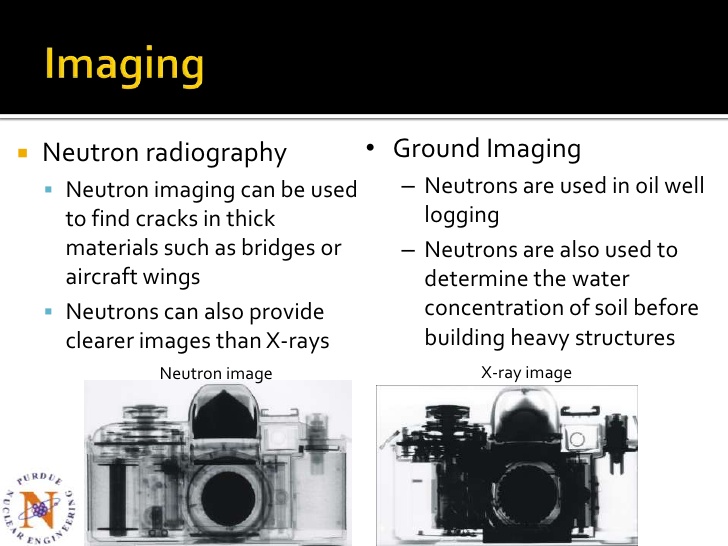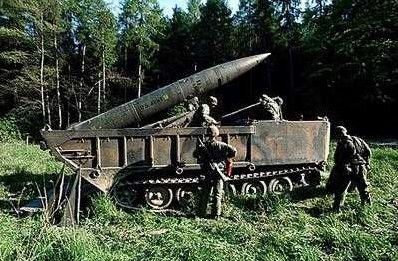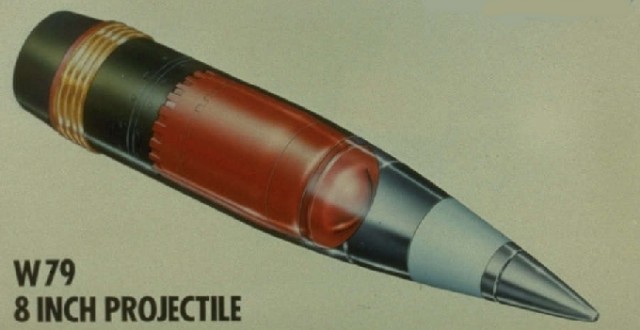“Away with excess enemy, but no less value to property.” That’s a line from Kill the Poor by the Dead Kennedys. It’s West Coast Hardcore at its most sarcastic, proposing that neutron bombs be used as a tool of urban renewal and redevelopment. This song was written in 1979 shortly after the United States had stockpiled two different types of weapon systems armed with neutron bombs.
Kill the Poor perpetuates a common misconception about the neutron devices and other enhanced radiation weapons. The popular notion is that they are some kind of death ray machines that kill people and leave buildings and infrastructure intact. These devices have been called a “capitalist bomb” invented by evil imperialist scientists for the purposes of genocidal conquest. That’s not really what they are. There are so many misconceptions about neutron bombs I decided The Big Board needs a Neutron Bomb FAQ
So there isn’t really a Capitalist Bomb?
No, every neutron bomb generates a blast equivalent to 1-5 kilotons of explosive force. The fission primary alone generates 300 tons to 1 kiloton of kaboom, with additional kaboom coming from fusion secondary effects. What makes a neutron bomb different is that the secondary fusion stage(s) is/are are specially designed to leak out all the radiation they want to make, including lots of neutrons, without adding that much more kaboom. In standard thermonuclear devices, fusion secondaries make lots of kaboom, usually with the help of a kaboom booster. Neutron bombs do not have a kaboom booster.
The purpose of a neutron bomb is to kill and incapacitate people with radiation well outside the blast effect radius.
That sounds horrifying. Death by radiation sickness is often slow and painful. Who would think of such a thing?
Sam Cohen, a young genius recruited out of college to work at Los Alamos during WWII. He never got his degree, but enrolled as a PhD student at Berkeley after the war. He left Berkley for RAND Corporation before getting his PhD. In 1958 he wrote a report about a proposed enhanced radiation thermonuclear device that no one had ever thought possible. Cohen intended this to be a “humane” nuclear weapon. He envisioned a weapon that could kill soldiers advancing in the field, while doing little harm to civilians who had either evacuated or sought adequate shelter. And the best part was that if properly used, survivors could return home to find their homes mostly intact. Water and sewage treatment plants could be put back into service. Road and rail connections would be only minimally damaged.
Yes, many soldiers would die in agony, but damage to civilian infrastructure would be minimized. Surviving civilians would have a fighting chance.
How Do Neutron Bombs Work?
Nuclear bombs of any type don’t really want to be bombs. They just want to give the world their sweet radiation and high kinetic energy fission products. Neutrons too, especially when there’s fusion involved. It’s Earth’s thick atmosphere that makes them into bombs. Kinetic fission products transfer energy to the air, and so do the initial X and gamma rays. The air heats to plasma levels, and plasma is very good at absorbing radiation. So most of the radiation goes into heating air so hot that it briefly glows in the soft X-ray range. This plasma quickly expands and cools to create a huge blast wave. The expanding plasma releases a huge surge of ultraviolet, visible light, and near infrared that can cause flash burns well outside the radius of lethal radiation. Many who survived direct exposure to the bombs at Hiroshima and Nagasaki suffered flash burns with only minimal exposure to radiation. Bigger bombs than that make even more blast and heat.
When the first hydrogen bombs were made, there was some uncertainty that secondary fusion stages could hold together while the fission primary detonated. Material strength seemed not to matter in the face of such intense forces. But density would. Mere inertia could hold the secondary together. But what material to use? Lead and gold are good choices, but depleted uranium (DU) is better. Anyone who has manufactured nuclear weapons has lots of DU laying around. It’s just barely radioactive and safe to handle, though potentially dangerous to ingest. It’s dense, and dirt cheap. It’s only a minor danger, but dangerous enough that nobody wants it. And it has a HUGE bonus. While it cannot sustain a fission chain reaction, if you blast it with enough neutrons from the fusion secondary it will undergo fission and add to the kaboom.
Ivy Mike, Sakharov’s Sloika, the Castle series thermonuclear bombs, and Sakharov’s RDS bombs worked this way. In 1958 Sam Cohen calculated it didn’t have to be this way. A small fission primary could initiate fusion in a poorly contained secondary stage or stages. These secondary effects would add little to the blast, but release large amounts of lethal radiation, including high energy neutrons.
How do neutrons hurt people?
You have heard of alpha, beta, and gamma radiation: These are what is called ionizing radiation. They hurt people by damaging chemical bonds in our cells by stripping electrons away from atoms in our cells making them into positive ions that change the shape of enzymes and cell structures to damage cellular function. They also damage DNA, but DNA damage is usually easily repaired and is not a major part of the initial stages of radiation sickness, though it can be a part of long-term lethal radiation sickness.
An alpha particle is a cluster of two protons and two neutrons. They move slowly but pack a wallop with their high mass and +2 charge. They hit hard, but strip electrons fast and stop moving as they become helium atoms. Clothing or even your dead skin cells stop alpha particles. But if you ingest an alpha emitter, you might die. Please to not eat the radioactive capsule in your smoke detector.
Beta particles are just high energy electrons ranging from 2-3 times more energetic than the electrons in an old CRT television to electrons that move Faster than the speed of light in water. Beta particles penetrate deeper and dislodge electrons by electrostatic repulsion.
Gamma and X-rays are simply high energy photons that mostly go through us. But sometimes they rip our electrons away.
Neutrons are different. They do not interact with atoms on the level of electrons at all. They have no electric charge and they are not photons. Neutrons penetrate deeply and interact only at the nuclear level. Fast neutrons might interact with a nucleus at levels of the strong nuclear force. Usually the encroached upon nucleus rejects the incoming neutron. But that transfers momentum to the affected nucleus and produces effects similar to ionizing radiation.
But its worse than that. Slower moving neutrons are sometimes absorbed into a nucleus. This nucleus might become unstable and beta decay into a different element. That makes for beta decay damage plus the fact that the new element won’t fit into the molecule it came from.
But the real story is here:

Notice how the X ray image misses the plastic but gets all the metal? The neutron radiograph goes through the metal and is absorbed by the plastic. Humans are not metal, we are akin to plastic. Neutrons can go through tank armor and sicken the humans within.
Did the US deploy the Neutron Bomb?
Yes! The Sprint ABM missile had the W-66 neutron warhead in 1975. You can watch movies about it at the link. The W-66 was chosen because blast kill would be unreliable at the altitudes Sprint might reach, and the high intercept speeds meant the target might move out of the way before the blast got there. . Sprint’s neutrons could scramble detonators and even initiate partial fission in nuclear cores to turn bombs into duds.
Thats not so controversial. What were the Dead Kennedys singing about in 1979?
The DK’s were singing about the W-70 and W-79 with enhanced radiation options Jimmy Carter and Harold Brown wanted to deploy in Europe.
The Lance with the W-70 looked like this

The W-79 looked like this:

But neither of these weapons were deployed in the late seventies. Carter held them back to make SALT II talks go more smoothly. Fully capable Lance missiles and enhanced w-79 shells were stockpiled in the US rather than being deployed to Europe. Reagan wanted to deploy in 1983, and quite a few more of these neutron bombs were built in 1983, as a counter to SS-20 deployment.
In 1984 Reagan backed off neutron bomb deployment, and after the INF and START negotiations neutron bombs became a bargaining chip. These neutron bombs were uncoupled from their weapon systems in 1992, and sent to be disassembled in 1996
Do other countries have neutron bombs?
Yes, they do. In the early eighties the Soviet Union tested a neutron device similar to the W-66 in the Sprint missile. They put it into the Gazelle ABM system protecting Moscow to provide terminal intercept defense their Galosh system could not manage. The Russian government maintains them to this day.
France tested a neutron bomb in 1980. France manufactured neutron bombs from 1982 to 1986. They never had these weapons on active alert, but unlike the US unlocking its reserves and sending them across the Atlantic, France could have gone full neutron in just one day.
China has tested a few, but has not weaponized them. Pakistan has claimed to tested one, but I’m not sure they have. North Korea claims to have tested one, but I am pretty sure that’s fake. Conspiracy sites claim Israel has the neutron bomb, but I don’t think so. They build their undeclared bombs in South Africa, and when De Klerk gave up nukes, they weren’t that sophisticated.
Neutron Bombs sound awesome. If we had them why didn’t we use them??
Seems we have a question from mister Trump. Imagine a Desert Storm with neutron bombs. So easy. You’d need just 7-12 neutron bombs to empty the trenches and roll on in faster than we did with fewer Iraqi casualties than there were.
But there’s the nuclear taboo. I think it’s good there’s a nuclear taboo. If the US had rolled into Iraq after a W-70 barrage what would stop the Russians from turning their Gazelle weapon into a tactical weapon used in Chechnya?
The US and France gave up their neutron weapons because you can’t fight a limited tactical nuclear war against a nuclear armed power without that conflict escalating to nation-ending strategic conflict. And if you break the taboo by nuking an unarmed power, you will never be able to protest when another nation does the same.
May the nuclear threshold remain forever high!
I think I covered most of the questions folks might have about neutron bombs. If you have any more questions, ask away in the comments.
I’ll finish reading this later and maybe talk about Arlo Guthrie, but, I had to come down here and comment that the bit about not eating the smoke detector did literally make me laugh. I wonder if they’ve used that in CSI yet?
LikeLiked by 1 person
People have tried some weird things with radioisotopes from smoke detectors. Luckily, anything you can buy over the counter is going to take a lot of doses over a long time to reliably do harm. You are right that it might make a good CSI episode, though they’d probably get the science wrong.
LikeLike
This is a funny Arlo Guthrie bit that plays with the conception of a capitalist-bomb that kills people but leaves their stuff intact:
It’s interesting to consider the idea of using tactical nukes because, as you say, in some situations they’d lead to less loss of life, in the short term at least. Certainly even primitive non-tactical nukes ended WW2 quicker and with fewer casualties. I guess “taboo” is a really good word for it.
LikeLiked by 1 person
Thanks for the Arlo bit. I’m not too sure when the term “nuclear taboo” was invented, but I know it’s been in common use since the seventies. I might try to find out who first used the term and write about it.
LikeLike
Reblogged this on things I've read or intend to.
LikeLike